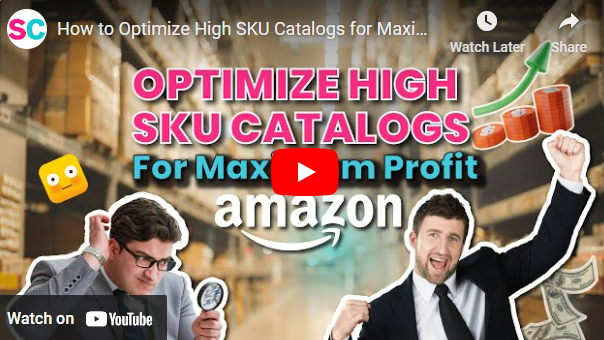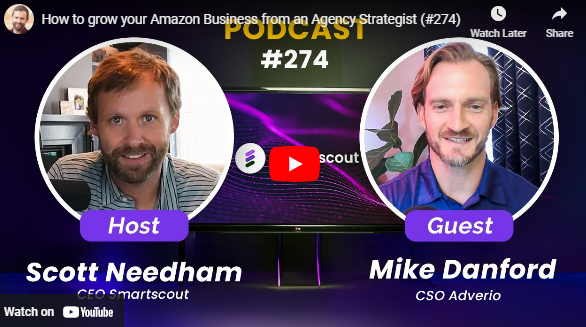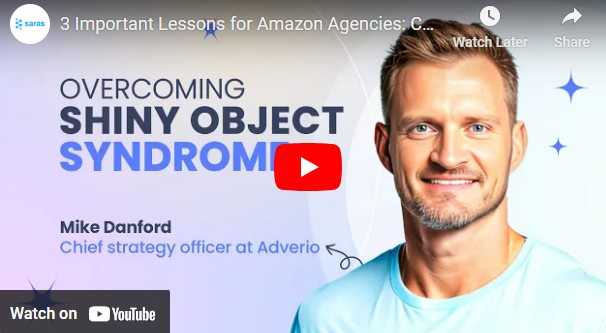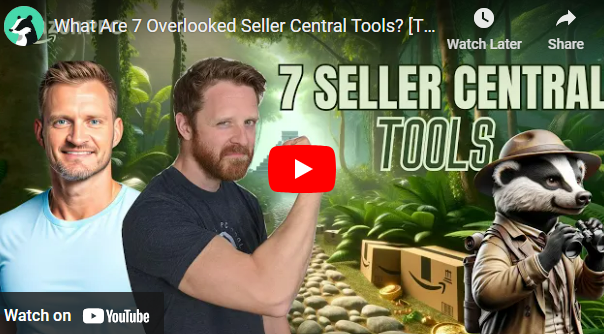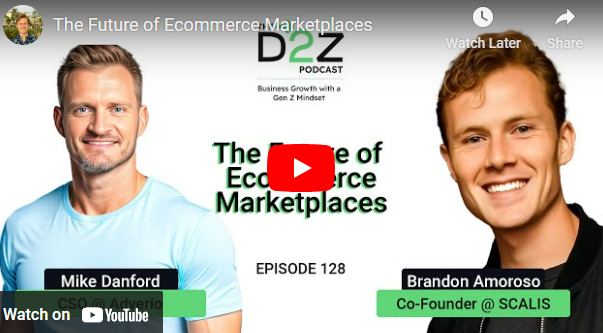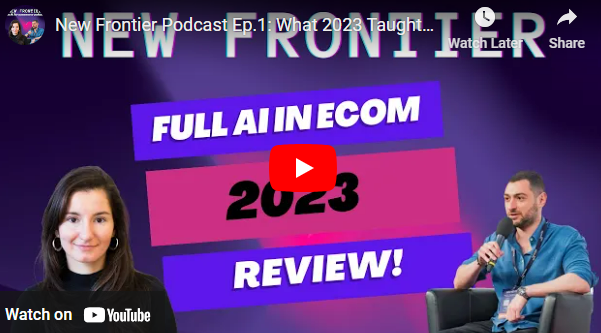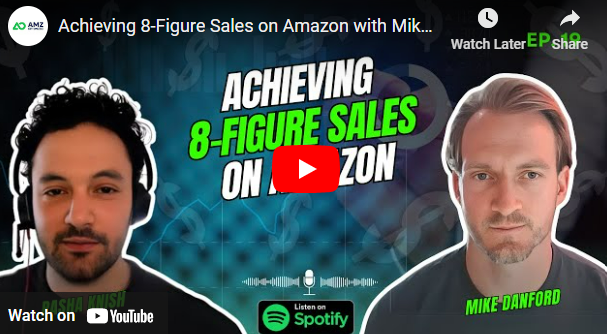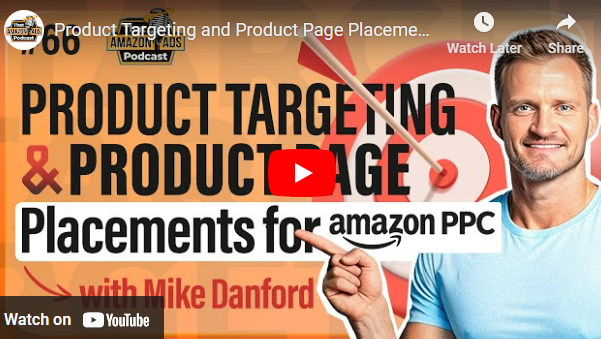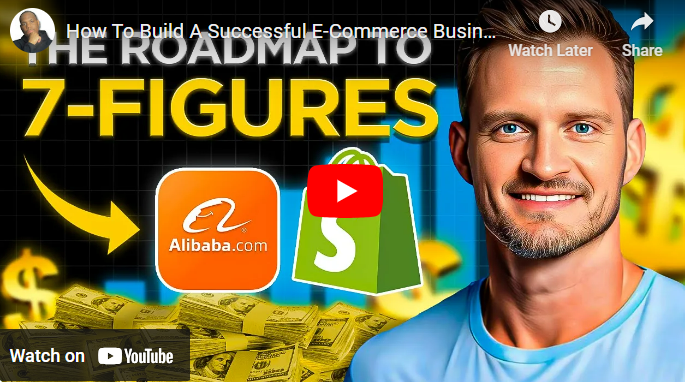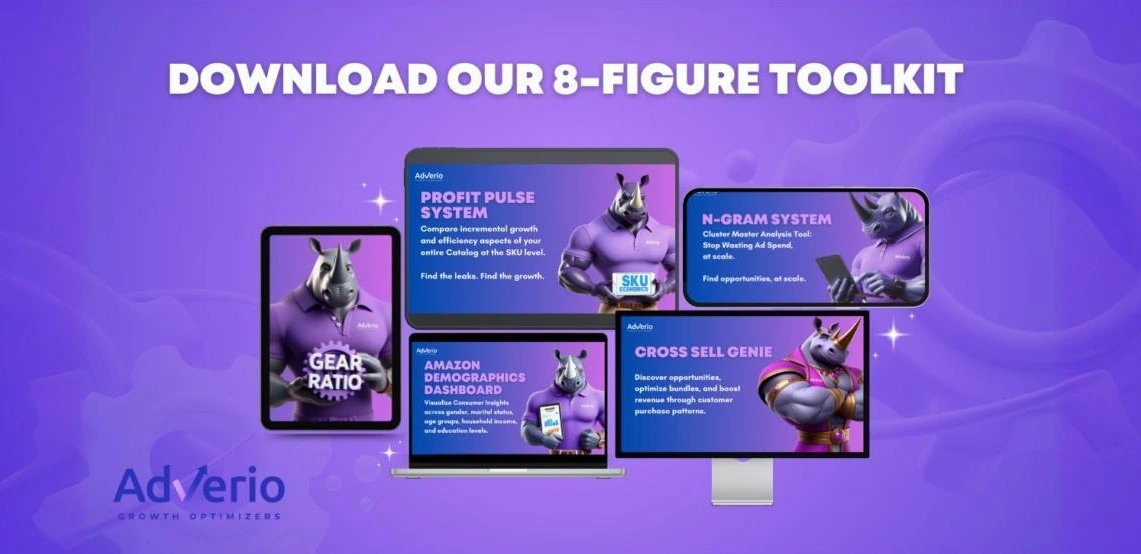The D2Z Podcast
The Future of Ecommerce Marketplaces
Join Gen Z entrepreneur Brandon Amoroso on the D2Z podcast as he discusses marketplace strategies with Mike Danford, CSO at Adverio. Discover key insights about leveraging Amazon, Walmart, and Target to grow your business, from optimizing large catalogs and paid media strategies to navigating cost structures and promotional calendars. Mike shares valuable experiences and strategies for expanding brand presence across multiple platforms, while addressing common challenges and innovative solutions. Tune in for practical advice and cutting-edge strategies that can elevate your marketplace success.
- What this podcast covers:
00:01 Evolving landscape of ecommerce marketplaces - 03:09 Ecommerce marketplaces require paid space for ranking and offer seller support.
- 05:59 Different marketplaces have unique price elasticity and target audiences.
- 08:40 Evaluating ecommerce marketplace strategies
- 10:56 Ecommerce marketplaces offer different challenges for brands
- 13:22 Diverse challenges in Ecommerce marketplaces
- 15:47 Evaluating the feasibility of discounting and exploring new marketplaces
- 18:26 Consider impact of promotional encounters on different platforms.
- 20:56 Utilizing automated solutions for managing pricing in ecommerce marketplaces
- 23:14 2025 will focus on diversifying products across marketplaces.
- 25:28 Offering a range of tools for Ecommerce success
The Future of Ecommerce Marketplaces
Brandon Amoroso: [00:00:00] I’m Brandon Amoroso, and this is the D2Z podcast, building and growing your business from a Gen Z perspective.
Hey everyone. Thanks for tuning in to D2Z, a podcast about using the Gen Z mindset to grow your business. I’m Gen Z entrepreneur, Brandon Amoroso, founder and president of retention as a service agency, Electric, as well as the co founder of Scaleless. And today I’m talking with Mike Danford, who’s a CSO at.
Adverio, which helps establish brands grow their sales on Amazon, Walmart, and Target. Thanks for thanks for coming on the show.
Mike Danford: Thanks so much for having me, Brandon. Looking forward to it.
Brandon Amoroso: So before we jump into, all the things going on with marketplaces today 2024, can you give everybody a quick background about yourself and how you got into this to begin with?
Mike Danford: Yeah, absolutely. So again, Mike Danford here primarily about 10 or 12 years ago, got into Amazon space, a little bit of arbitrage rebuying, reselling Nike shoes, et cetera, and [00:01:00] then went over into my own supplements and some apparel. Products as well. And then I started posting some of the feedback and success that I was having with my advertising campaigns.
And then folks started seeing that and say, Hey, could you do it for me? And then the rest is history there from turning into an advertising to a full service, a marketing agency from there. And during that time realized that really had a passion for large catalogs and how to. Optimize those and realizing that a lot of brands would expand their catalogs without a strategy.
And obviously figuring out how to help them do that and, be able to make those decisions as to when to cut a product or expand a product line and where to find that data as well. So now we offer that for mid seven, mid eight figure brands. It’s where we’re working now.
Brandon Amoroso: How I assume it’s obviously changed a lot, but since you, got started almost. Content or even more years ago now at this point, what are some of the biggest holistic [00:02:00] changes that have happened within these marketplaces over that time period?
Mike Danford: Yeah, great question. Yeah, I say, obviously pre pandemic post pandemic, there’s a pretty big shift, but in general, it’s just getting more competitive in the paid media.
Space within each of the platforms and certain platforms are a little more advanced than others. Say Walmart has, you can’t even negate or target has a different way of negating and reducing to help you improve your relevancy and exclude traffic. Amazon’s probably the more sophisticated out of those marketplaces with different types of campaigns and targeting and placements and a bunch of multipliers, et cetera.
So it’s interesting to see how each platform is navigating that and where they put focus on. In general, again, it’s just getting the CPCs, the cost to run advertising, the amount of ad space that’s on a landing page SERP, or even a product detail page is much higher now. I think all the platforms are realizing they can monetize that real estate.
So then you have to figure out how you actually have to pay to [00:03:00] play now. And it worked where, five, six years ago, it was, a lot of brands could sling out the products and whether they had off platform recognition or etcetera, it was a lot easier to rank. And now you really have to have the paid space and even more so and defending your own products, etcetera.
And some of the platforms don’t allow others to target your actual branded and IP, which is interesting. So that’s it’s definitely helpful to correct that any kind of conquesting and different types of tactics and stuff. Just knowing those nuances in each platform is definitely important.
And then I think that each platform has its own shift in ideology around how to provide seller support. Whether that be specific to managing actual catalog or advertising, et cetera, because a lot of those divisions are separate on each marketplace. I’ll say that, a couple of marketplaces definitely are definitely seeming to put more support on the seller side as opposed to just, customer centric only.
And they’re really trying to help navigate and make it a more enjoyable experience and easier [00:04:00] and also allow for more standardization across all the platforms. I think that Amazon in the old days, you could pretty much sling up everything you wanted. It wasn’t really much of a standardization except for some general rules that you didn’t really have to abide by in terms of your copy on the listing, certain images, et cetera.
Now, they are taking, I think, a page out of Walmart’s book where. Walmart was always required, a certain recipe and your title, brand product, attribute, et cetera. And now Amazon is going back to that both in requiring it. And now with the, in presence of AI, they can force it.
Hey, your title may include three extra things that we don’t approve and it’s okay, we’ll let you do in the back end, but whenever a customer sees it on the front end, we’re going to remove it anyways. So it’s been interesting to see the, the forcing of compliance and things of that nature.
There’s a lot more development on that as well.
Brandon Amoroso: When. Amazon is obviously the, the 800 pound gorilla in the room and was first to market in terms of Amazon, Walmart and Target is [00:05:00] Walmart sort of second and then Target third. And how do you think about, if you’re a brand, do you really need to be on all three?
Should you be on all three? Does it depend on your size, your maturity as a company or. What’s like the general landscape of those 3, because I know Walmart has been pushing the marketplace pretty aggressively. Target is 1 that, I’ve seen a little bit of but not a ton. So what are your general thoughts around that?
Mike Danford: I, it’s great and we’ll come back to 1. I think that’s probably more important right now, but I’ll reference those 3. So you think about when you go to the brick and mortar, obviously Amazon’s a little different, but if you think about what Walmart’s target demographic is, where they’re located, actual physical locations versus target and who they cater to and the in person shopping experience that does translate over into the online.
And what I mean by that is there’s price elasticity, there’s different price elasticity on each of those marketplaces. And Amazon’s kind of a little bit of both. I think that most people will go to Amazon just for the convenience, they may have the prime membership, et cetera. I have a Walmart shipping, [00:06:00] can’t say when the shipping of other platforms, et cetera, they just trust Amazon.
It’s faster delivery, et cetera. I think that’s a big different trader. And with your specific to, should you be on all or one, et cetera, we have brands that will come to us and they may be only on Amazon or some combination of the three. And then we have brands right now that are really going to start pulling off of the platform.
I’ll say the biggest thing that, at least I’m not trying to beat Walmart, but there’s something they’re trying to figure out right now is they’re messing up category notes. And we’re also seeing that same thing on Amazon where the AI is Overly correcting and has the wrong impression as to what a product is and it will keep forcing and there’s no manual override or at least one that will stick and persist.
So there’s a lot of catalog issues and then Walmart’s just a little bit different. Not the volume, generally speaking, 5 to maybe 20 percent of what you do on Amazon, you’ll do on Walmart. Generally speaking, there are certain verticals and niches and product types that will do a little better.
On one [00:07:00] versus the other. And in target, primarily as an invite only, they’ve opened it up, it got burned last Q4 in 2023 with having a bunch of inventory on hand that didn’t sell. And it was a big thing. So they really apprehensive to invite new sellers on. And it still is an invite only, at least in our experience.
So it is great. And the brands that do get a presence or are able to go through everything on target, that is a very. Stable and viable channel for them. And I believe one that we’re missing at least in the, in that initial comment is Tik TOK. So I think that’s where we’re seeing one Amazon and Tik TOK are starting to figure out how to communicate and figure out how to play with each other and then obviously have Amazon going up against, Sheen and the other low costs.
And they’re trying to get the Chinese sellers and have a special program, a special pricing, et cetera, on their own Amazon platform, et cetera. But again, brands that have a really good presence like a real brand presence, a, people actually searching for them on [00:08:00] any of these platforms, I think do really well on other platforms just because already brand recognition, it’s just where they are most comfortable, adding to cart and already have that trust and faith in the shipping systems or the, Hey I’m, I like the security of using this marketplace, et cetera.
So I think it goes back and forth, but it’s dynamic. We have brands that are due to see, their own website and. They do really well and they go to Amazon and it doesn’t work or vice versa. They try to go off Amazon onto their own. And it’s just, I think it’s very unique and different.
And it comes down to patience. I think there’s a lot of timing involved in it as well. And then it’s, we work with brands and typically it’s about a year. Hey, we’re going to go on another platform or we’re going to try, pushing a different platform or whatever it may be. We really need to give it a full calendar year to understand what’s going on.
And then, having each marketplace have a dedicated rep. Someone that can help us navigate those when we’re having category node issues. Hey, why are we having this? How can we overcome this? And how impactful is it to the business? And things of that nature. Again, it’s specific to each brand, I would say [00:09:00] for sure.
And I think the only way to do it, we like to, hey, to be objective, let’s actually put, get on the platform, understand the lift, make sure it’s not too big of a lift for the brand. Let’s make sure we’re not doing all of it at once. And then look into about three months, six months in and say, Hey, how much is it to maintain this?
Is it more juice worth to squeeze those types of questions? And then it’s what does this do to our other platforms? Is it is are we actually have an incremental lift here? Or are we actually pulling from one platform over to the other one, which is obviously the more complicated part to do. But we do see that, especially when you start getting on the five, six plus channels, it’s okay, we’re not really increasing the total global top line here.
We’re just getting more and more pieces on different platforms. So how do we do this? And what’s the best ones to keep going forward? And that’s about it. That’s an annual conversation for most of the brands that we work with.
Brandon Amoroso: Yeah, I’ve seen a few brands that had a big investment in a Shopify presence during COVID pull back from that and go exclusively Amazon typically food and Bev [00:10:00] where the the unit economics on going DSC on a Shopify website or just abysmal.
If you’re a kombucha company and you’re selling three or 4 kombucha and a glass bottle, and it needs to be, a cold chain and all these other things it doesn’t really make a whole lot of sense. And do customers even really want to go to your, your website to shop from you in that way?
It’s much more of a, we’re picking this up at the grocery store, or we’re adding it to our basket of other items on 1 of these marketplaces. So I’ve seen that. But then to your point, some of the product categories on Amazon are extremely saturated and it, sometimes will not work for a successful Shopify brand who is maybe like a skincare company.
And then they try to go into Amazon and. They’re starting from scratch. They have no reviews yet. And it’s just extremely painful to try and get, them over and across that hurdle. Would you say that Amazon is still the place to start your marketplace journey if you’re a, if you’re a DTC brand and you need to think about, one of these three [00:11:00]
Mike Danford: We have brands that come to us and if you’re not already on Amazon, we’ll actually look and if you have a strong volume of reviews on your own website, there is a way on Walmart to, they’ll syndicate those reviews to your listings.
So you can actually take your DTC. Reviews and post them on your own listings on Walmart. And that’s a nice way to hit the ground running and we’ll have brands do that. It’s free light lift. It’s a couple of emails getting connected, listing it and going, and then you can see, what it is going to have to put inventory.
You can just do your own and see what happens. And I think that’s a good way. And we like for them to go ahead and do that because we don’t know when or if that’s ever going to change, if they’re going to start charging for that, if they’re going to start limiting it or not allowing it moving forward.
So Hey, Let’s go and at least get your products uploaded your Walmart IDs established and get the reviews over at least right now in case this, Walmart does take off or they, they finally, figure it out or Amazon does it and you have to come back to Walmart or, have a couple of slower play on one platform or another.
And then, yeah, most folks are [00:12:00] just really want to get an Amazon. It’s just such a such so large. It’s. How can we do it? And brands have to be very strategic in which products they put there, which ones will take off. What does, it’s not just what works on your DTC or what works on one platform doesn’t necessarily work on the other.
We have brands where, they’ll have a, we call it parents or groups or product type that does really well on one platform. And it’s just. Stronghold and you go to another platform and people aren’t looking for that product or to your point. It’s way more saturated or your price more price sensitive on that platform and others.
So even it’s not even brand the brand is product to product. Sometimes style to style, size to size different types of packaging, different types of combination. It’s a lot for some of the brands again. That’s why we work with larger brands, larger catalogs. We have a way of, okay, let’s go to those other platforms, but also let’s look at the ones that you’re already on and why are your B, C1, C2 tiers not performing well?
When’s the last time you revamped them? When’s the last time you tested, pricing changes [00:13:00] or updated copy or any of those questions before we really go into other platforms? Because any brand, even a brand that’s just on Amazon or just on one of the marketplaces, a lot of them neglect the basics, or they did it back in 2020 or 2018, or whenever they first joined the program, the platform, even 2023, and they haven’t updated.
It’s the advances are there. So you have to stay on top of it. And then maybe they tried and they put a little advertising after it, but it wasn’t a full send approach or it wasn’t a well balanced approach. Hey, let’s revisit that. And let’s take some reallocation of some dollars to go there.
That’s one of our favorite things is, within 30, 60 days working with a brand. Hey, you’re moving products that we’ve never been able to move in a platform or it’s been, four or five years since we’ve even seen this product move. How are you doing it? So those are awesome for us to do as well.
Again, I think it’s going down brand, some brands, product lines, and actually even individual products. Sometimes
Brandon Amoroso: which product categories you say work best on each of these three.
Mike Danford: I would, I don’t know if it’s necessarily a product category. I think there’s always gaps that you can fill in each one. I think that [00:14:00] it’s to your point.
It’s one how saturated is it and what is it saturated with is it saturated with inferior quality superior reviews superior pricing There’s a few different ways of looking at it and you can we do an audit beforehand on the actual market to understand What the chances of likelihood are of entering that and penetrating that and it’s different each platform I’ll give you an example We have a brand that is on seven or eight marketplaces and One of the struggles I have now to your other question is once you’re on that many marketplaces, your pricing has to match.
And some of those websites say Macy’s even Home Depot and a few others will randomly run a sale and you get a sale calendar, but you don’t really know our promotional calendar. You don’t really know exactly when it’s going to do it, but you can lose your buy box on the other platforms because that particular marketplace is running a deal.
So you have to be able to follow that and understand, hey, is a 10, 20 percent discount across all my channels. Can I afford that? Is it worth being on that platform? So that’s another piece as well. But [00:15:00] going back to your question, it’s, you don’t, again, you don’t really know until you get in there.
You have to do an analysis. And a lot of times it’s, I think it’s easier for some of the brands. It’s easier for them to actually just put the product up there. They have a PIM or a down and they can add another marketplace and they can move some inventory over. A lot of times it’s just let’s find out by actually putting on there as opposed to spending all this money and time and hypotheticals and understanding again, if it’s expensive or hard for them to shift or move the logistics, then yeah we’ll do the actual due diligence up front, but a lot of times it’s let’s put it out there and see what happens, see what sticks and then revisit, on a quarterly basis.
Brandon Amoroso: You mentioned home Depot and Macy’s. What’s like a marketplace outside of the three big ones that you see as an up and comer that people should be paying attention to?
Mike Danford: Oh that’s tough. So we work with brands, you can get facilitated on multiple other marketplaces. And some of those you have to actually have brick and more.
We have to actually have inventory on their [00:16:00] shelves for you can even get on those platforms. I, it’s interesting. I don’t have an exact answer, but I’ll tell you that. So what you would buy in a physical store at Home Depot or Lowe’s, as opposed to what you might buy online from Home Depot or Lowe’s, is there’s overlap, but there’s a section of that where you’re like, wow, I would have never went to the physical Home Depot or Lowe’s And bought this product, but it’s available on their website.
Again, to your point earlier, I’m building my cart, I’m doing a home project and oh, we’ve got this other product and I’ll just add to the cart while I’m there. Or it’s got a promotion or it’s, I wasn’t even thinking about it, et cetera. There’s no real, it’s per brand.
We’ve seen brands that again I’m referencing one that’s in Home Depot that I would have never guessed they would have been in Home Depot. I would never have said, Hey, let’s put your products in Home Depot, on Home Depot. It’s just interesting. But I think again, it’s whoever the consumer is and what they’re comfortable with and where they spend their time.
If you can get your products in front of your target. And where they spend their [00:17:00] time and what they already have the the trust and the actual platform and the brand and whatever platform, Home Depot versus Lowe’s or what used to be Bed Bath Beyond, which is no longer and some other stuff.
If you can just get in front of those and your product makes sense, I say do it. And again, I think the big caveat there that we’re dealing with one is another one’s on Macy’s. It’s, I think the big question that we need to ask on those platforms is, what is your promotional encounter and how are you doing it?
And if we, if it’s a top seller, On another platform, say Amazon versus Macy’s, do we even want that product on Macy’s because we know that there’s going to be a promotional kind of that impacts my cells on the other platform. That’s what we do right now as well as, Hey when they run the promo, how does it impact us on each platform?
Is it worth it? Again, because you’re having the price match. Otherwise, you just lose the sales and the traffic for that day or that four day promotion. They’re running etcetera. So that’s a whole nother game in itself. We do dynamic pricing across the platforms and try to start with Amazon first, just because it guarantees everyone.
Amazon is [00:18:00] the most restrictive and most reactive to your pricing off of Amazon. So we want https: otter. ai It’s very interesting. Each brand is different in their collection of sites that they’re on are different from time to time. And it’s just understand those intricacies and for us being able to level set on there’s only two platforms that will run advertising on that would give you access to multiple marketplaces.
So at least we have that consistency. We understand how that works. And it’s the other little intricacies and unique issues that arise again. Pricing is another thing. I think that’s, you asked about 2024. For us 2025, our vision is massive on dynamic pricing and how to really take gamification and the advanced in AI, obviously, but the dynamic, like being able to manipulate and massage your prices.
And it’s an auction of click through rate, an auction of conversion rate, as opposed to ads, right? So how we take that same philosophy and data that we have Do it on just pricing and [00:19:00] how keep advertising the same because we’ve got, let’s say a great stable process and how can we just, change these other levers to get more I wouldn’t say manipulate, but massage the, and stabilize the buy box and the sell through, et cetera.
So that’s definitely where I think we’re at for 2025 as well.
Brandon Amoroso: Yeah. I didn’t even think about the promotional calendar from some of those marketplaces and how that can impact you because, Amazon doesn’t have a promotional calendar that they roll out, but Macy’s obviously does, and some of these, like Macy’s, it feels like there’s a sale running every, every day I can confirm.
Yes. I, are there like automated solutions or technologies out there right now that can help support merchants with these pain points?
Mike Danford: Yeah, so a lot of these merchants will have a, a PIM or DAM or a pricing platform or an inventory platform to where they can have rules in place where if, this didn’t follow that and you can put even inside of each platform, they have some dynamic pricing mechanisms [00:20:00] in place where you can put floors and ceilings on price.
And then obviously we use third party connectors to help us with that as well. And, sometimes it takes a day or two. You’ll get your, you lose the buy box or you’ll be suppressed for your listing or both, and it takes a day or two to figure it out. You can’t really see everything intraday.
And if you have thousands, tens of thousands of products in some of these catalogs, it’s very difficult to catch everything. And what matters when there’s hundreds of alerts in your dashboard when you go in. So it’s just how can you stay on top of that and being prepared and given the again, I think the biggest thing is, Having your parameters in place and being prepared for those, you know when the promotions are going to come through.
And then the other piece is follow and make sure it makes sense. This can, should I have that product on the platform where I know they’re going to run a promotional calendar or should I take that because it just, it’s too impactful. And I think that’s where a lot of brands. Maybe don’t run that analysis.
We’re not really sure how to run analysis. So we help them with that as well. And that’s really fun [00:21:00] for us as well. We’ll take, we run some correlations and analysis models across each platform and run hypotheticals and look backs. And it’s fun. It’s fun for me. It’s one of the things I like to do, but it’s again, you need to do it.
You need to understand how it’s going to be. And measure it. A lot of hypotheticals, but you don’t really know until you do it. And sometimes Amazon doesn’t do it, like they don’t catch it, or you can change the name slightly, or you have a slightly different skew, or you change the UPC, but it’s the same product or a very similar product.
So we have other little ways, I’ll call them hacks, if you will, just because it’s a trendy word, but we have brands that come to us and say, Hey, we’re selling Costco. And this part does really well. And it is not hard for us to one, have a different UPC and have a slightly different box or package, or we sell one less bar or one more bar, if it’s a soap or whatever it may be, and then then you can’t, they don’t the pricing deltas and the promotional counters don’t impact one or the other because it’s not the same as that product.
And that’s been, I think that’s going to be a big thing for us in 2025 is helping some of these catalogs with these [00:22:00] established products that they’ve been selling is, Hey, let’s think about this differently. Let’s. I would say gain the system, but also let’s play with in terms of service. We always want to do that as well.
But how can we make this slightly different to where we’re not triggering? But each platform may not know the difference, right? Whoever’s shopping on one versus the other may not really know the exact difference with the product. Maybe it’s a different thread count. Maybe it’s a different thread style, a slightly different size, half an inch bigger, half an inch smaller, that kind of thing.
Brandon Amoroso: I’ve seen Like a lot of products on Costco where you can only get them on Costco, but it’s essentially the exact same product that is everywhere else on the internet. And so that, that makes a lot more sense now in terms of, why somebody might be doing something like that.
Mike Danford: Yeah.
Cause what you’ll have on Costco is. Folks will buy it in bulk and then they’ll resell it or put it against your listing that you have on Amazon so you don’t have the buy box. So you’re also like, hey, I know you’re going to buy and resell this, you’re going to do the retail arbitrage as opposed to the online arbitrage, just like I was with Nike’s and whatnot when I first started, 10 years ago.
You’re like, Hey, [00:23:00] here’s your sandbox. Go do this over here. Like it’s okay. Like you’re not watering at a brand. We know it’s a good product. You know what the experience is going to be, but don’t mess with our product that we have this very specific to Amazon or Walmart or whatever platform they’re on. So yeah, definitely.
Brandon Amoroso: I appreciate you joining us and for sharing all these insights. Thank you for taking the time, but before we hop, can you let everybody know where they can find a connect with you online if they want to learn more about your services and some of these marketplace opportunities?
Mike Danford: Yeah, absolutely.
And again, thanks for having me. And vario. io. So A D V E R I O. io. And if you go forward slash downloads we have what we call eight figure toolkit and a bunch of tools that I’ve been building over the last five or six years in the team as well. We give a lot of those away once we’ve built on a small scale before we roll them out to our larger brands, et cetera.
So those available there for your audience as well. LinkedIn, but a website would be most where our resources and you can stay in touch from there.
Brandon Amoroso: Awesome. Again, thanks for coming on for everybody listening as always. This is Brandon [00:24:00] Amoroso. You can find me at brandonamoroso. com and scaleless. ai.
Thanks for listening and we’ll see you next time.


